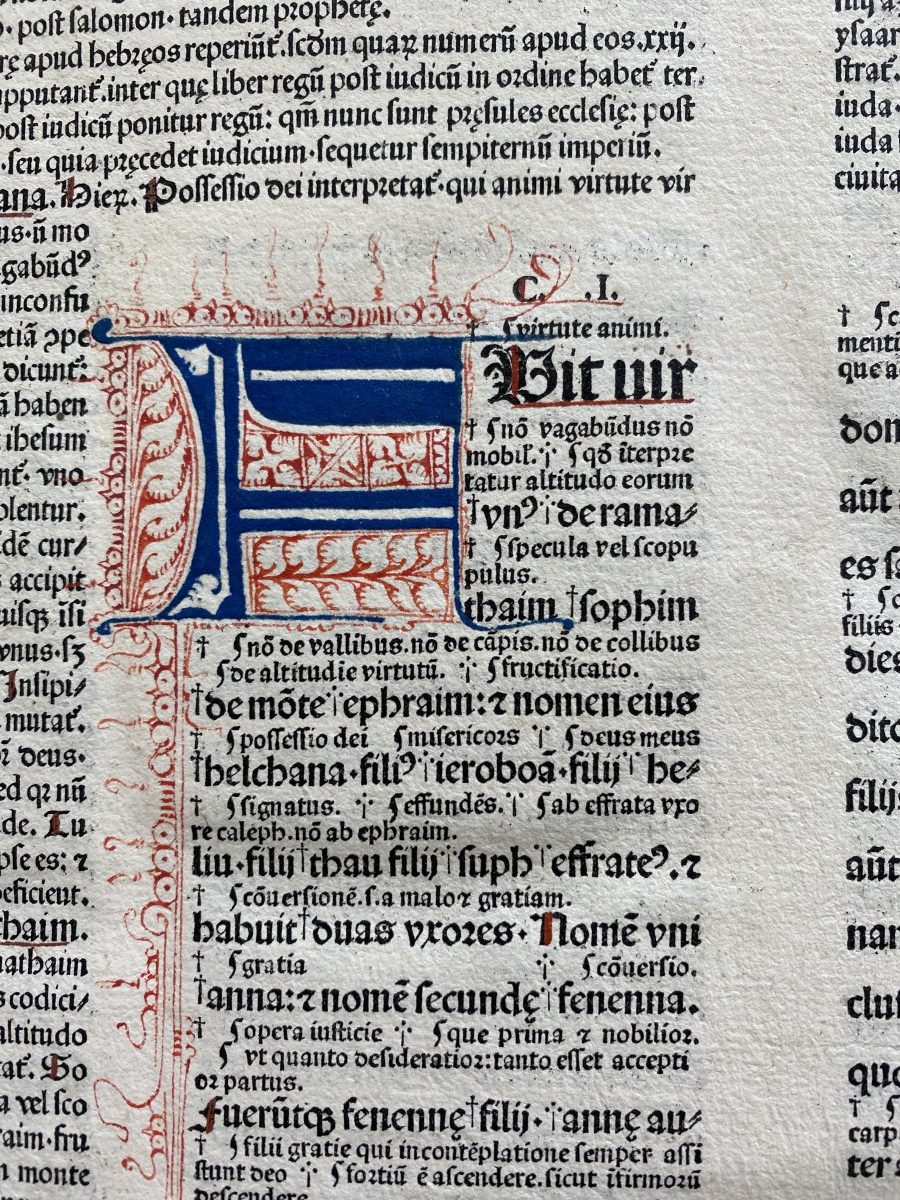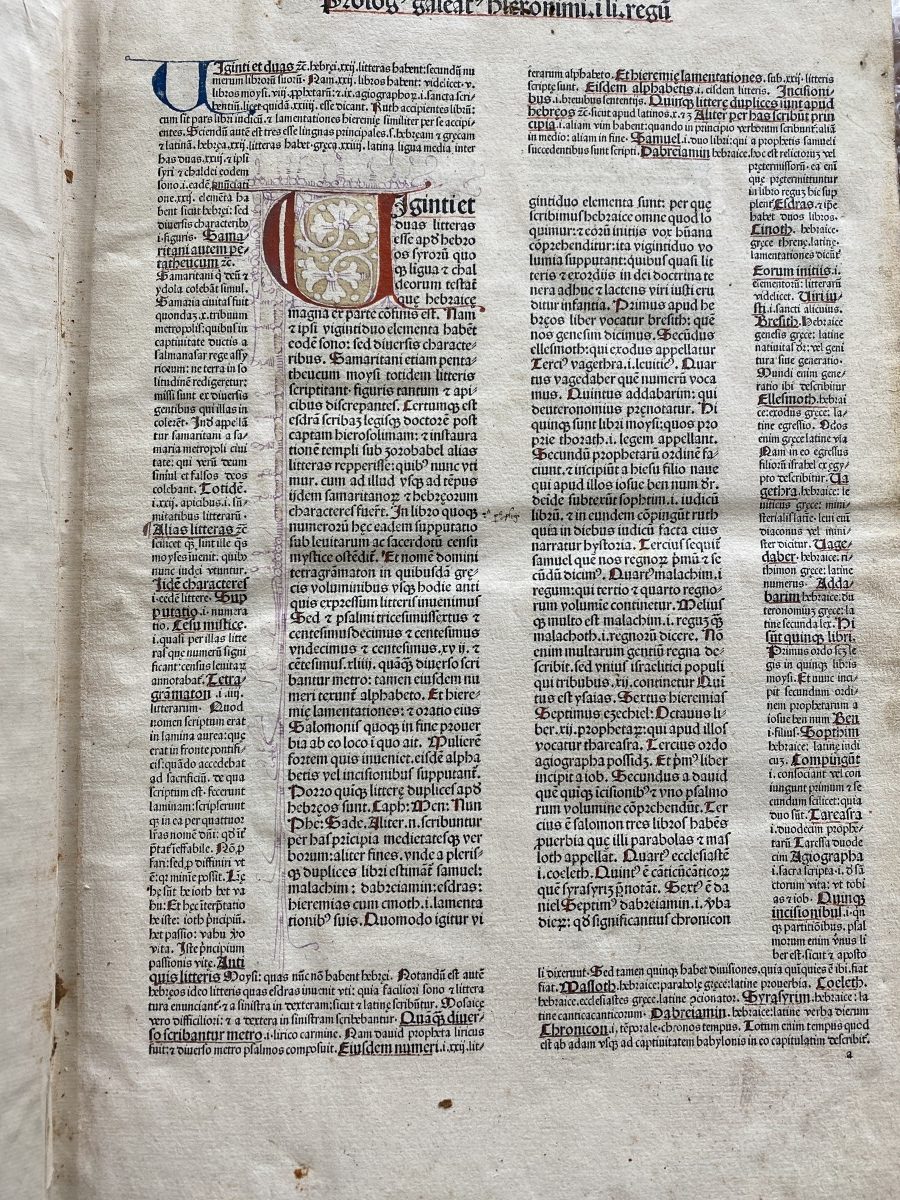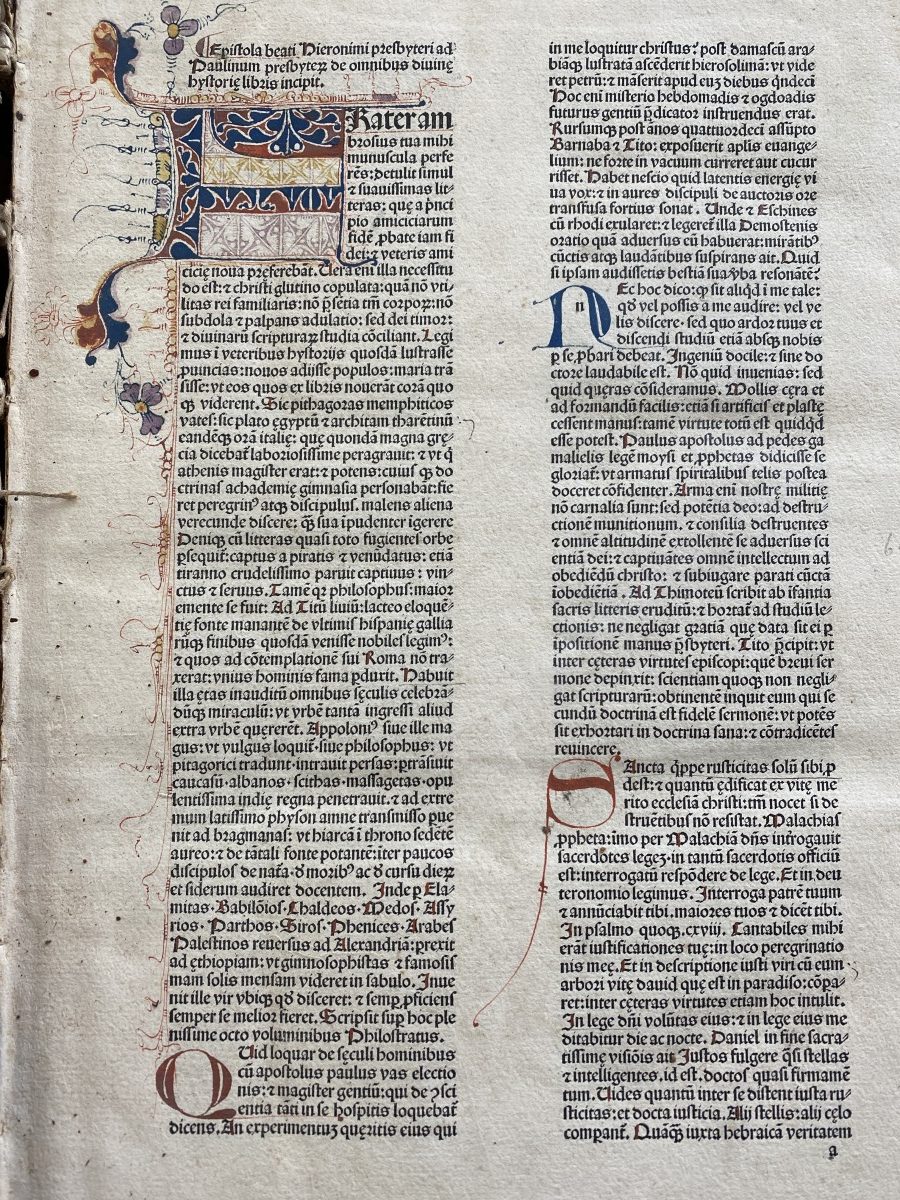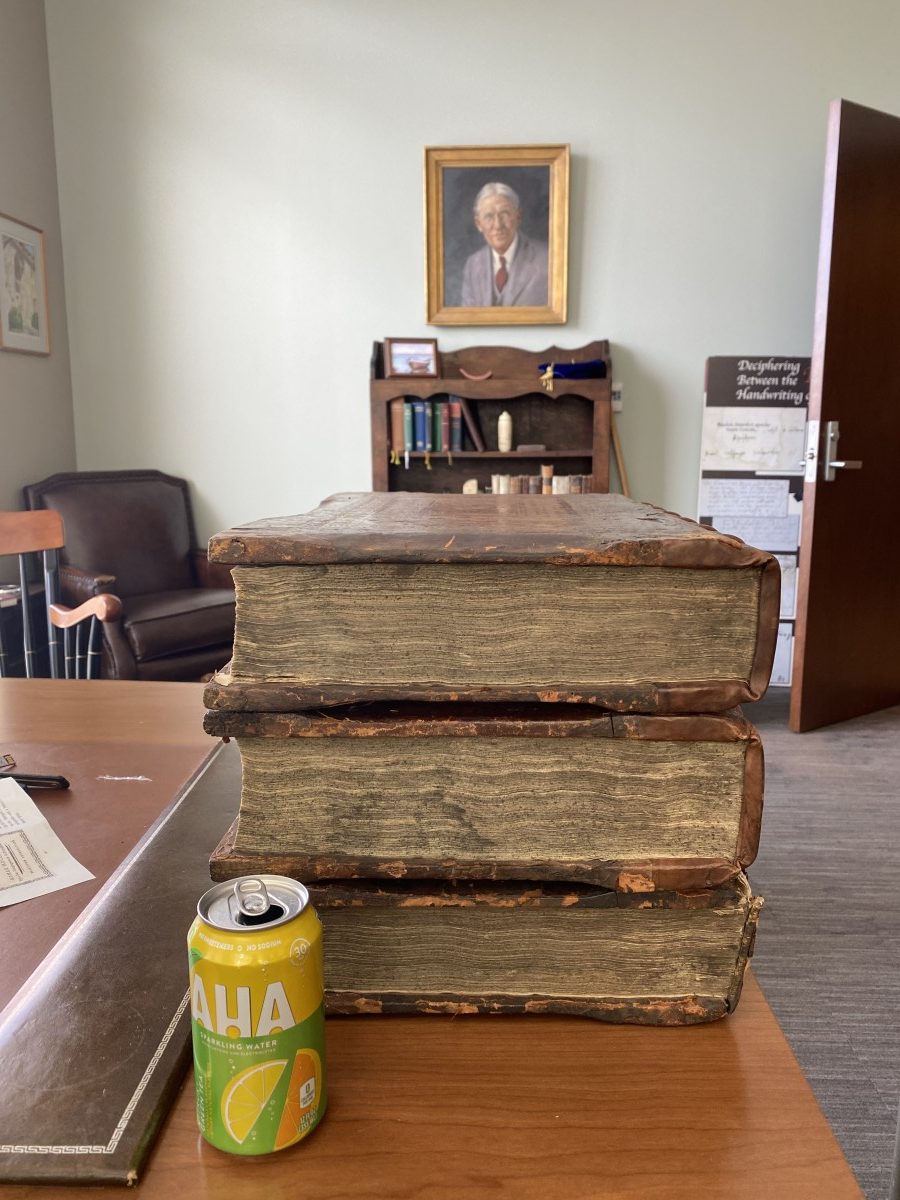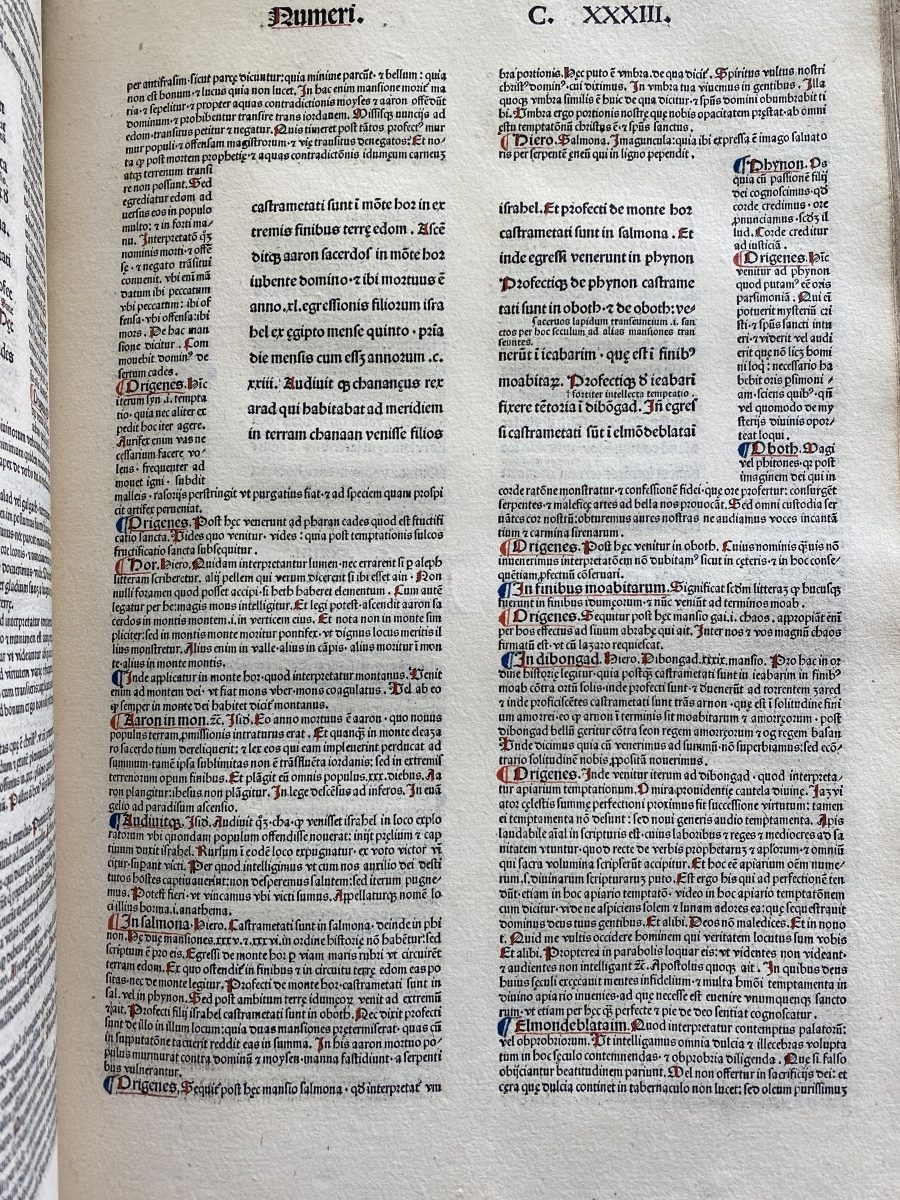Pitts Theology Library recently acquired a copy of the earliest printed Glossa Ordinaria, the Latin text of the Vulgate Bible with marginal and interlinear “glosses” or commentary, largely written by figures in the early church. Compilation of the Glossa was traditionally attributed to a 9th century Benedictine monk, but is now believed to have been compiled and edited in the late 11th and early 12th century by the French theologian Anselm of Laon, with his brother Ralph of Laon, as well as by the English bishop Gilbert of Auxerre, also known as Gilbert the Universal. The Glossa Ordinaria was the basis for biblical interpretation throughout the latter half of the Middle Ages.
Pitts’ copy was printed in 1480 in Strasbourg by Adolf Rusch for the Nuremberg-based publisher Anton Koberger, who is well-known as the printer of the Nuremberg Chronicle. The Bible is a massive work, divided into 4 volumes, of which the 3rd is unfortunately missing (Proverbs – 2 Maccabees). Red and blue initials were drawn by hand in the 15th century at the beginning of each chapter and the initial letters at the beginning of biblical books are richly ornamented in color and with gold leaf. The three volumes were previously owned by the Rugby School Library, a renowned English boarding school in Rugby, Warwickshire. Prior to that, this Bible was in the possession of Matthew Holbeche Bloxam, an antiquarian collector from Rugby who left two inscriptions in the work, dated 1851 and 1857. As with all incunables (books printed in the 15th century), surviving copies of this Bible are quite rare. OCLC reports only 18 known complete or partial copies in North America, while the Incunable Short Title Catalogue (ISTC) records 37 copies, partial or complete (for the list of holding institutions, see https://data.cerl.org/istc/ib00607000). Pitts continues to acquire incunable Bibles, an important collection for research and teaching. These early Bibles demonstrate how publishers were adapting the new technology of moveable type printing to organize the Bible text alongside images, commentaries, and other paratextual elements like indexes, cross references, and concordances.
Curious about other new library acquisitions? Check out this webpage for live updates from the catalog!
Content by Armin Siedlecki, Head of Cataloging and Rare Book Cataloger

